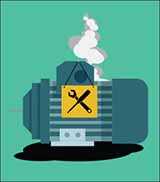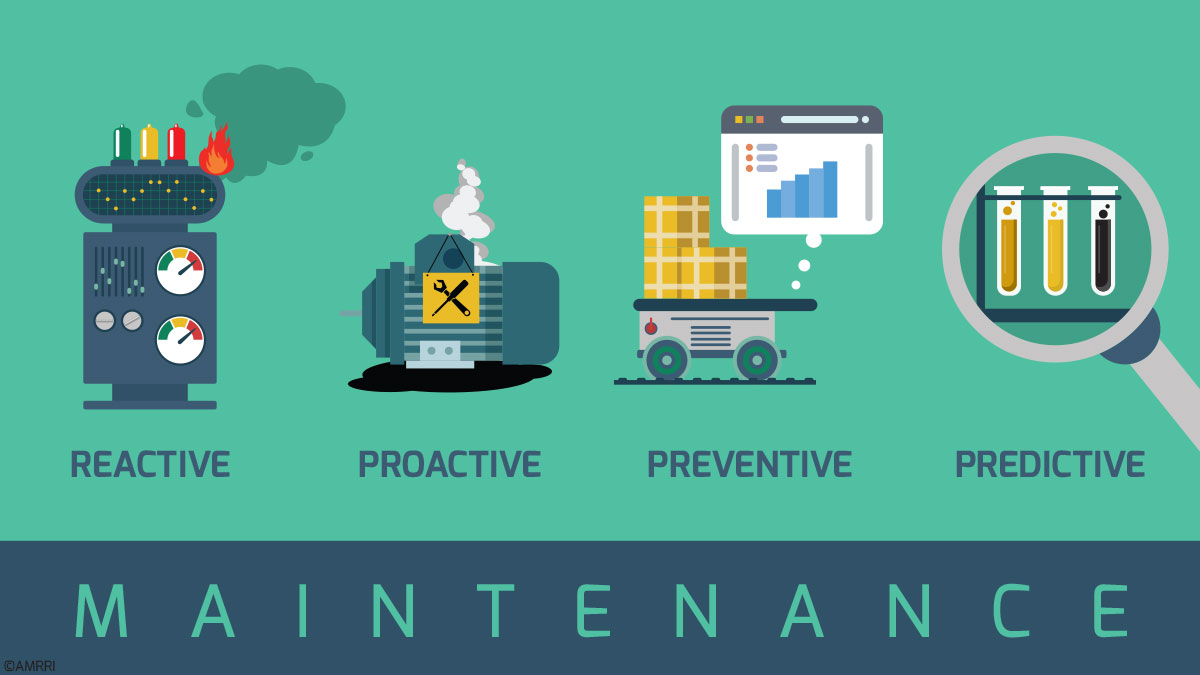Throughout my years in the maintenance and lubrication industry, I’ve seen maintenance strategies evolve from reactive, to proactive, to preventive, to now moving their way to predictive.
As we move towards the future, we’re seeing companies move toward a predictive approach using data integration solutions, automated intelligence, telematics, and big data – with oil analysis being an essential piece of data here.
To prepare for the future, let’s review how lubrication and maintenance strategies and practices evolved and where the industry is moving.
Reactive Maintenance
 If you ask any maintenance professional today, they’ll say their goal is always to reduce or eliminate reactive maintenance or an unplanned, unscheduled event that catches you by surprise and halts production for the day.
If you ask any maintenance professional today, they’ll say their goal is always to reduce or eliminate reactive maintenance or an unplanned, unscheduled event that catches you by surprise and halts production for the day.
Not to mention the safety concerns involved in reactive maintenance, with technicians rushing to address issues before significant production loss.
Proactive Maintenance
 When operating a proactive maintenance strategy, the root causes of impending failures and an analysis of already-occurred failures takes place.
When operating a proactive maintenance strategy, the root causes of impending failures and an analysis of already-occurred failures takes place.
You must look beyond the symptoms and look at root causes, such as incorrect lubrication, faulty rebuild practices, contamination control practices, etc. You will then focus on remedying these root causes to extend component life hours and prevent future catastrophic failures.
Preventive Maintenance
 Maintenance and lubrication professionals have relied on strategies to take action on prescribed intervals, such as days, miles, hours, or loads hauled to prevent potential problems. Scheduling maintenance on a predetermined interval means one takes measures to drain and fill lubricants or replace an engine or transmission.
Maintenance and lubrication professionals have relied on strategies to take action on prescribed intervals, such as days, miles, hours, or loads hauled to prevent potential problems. Scheduling maintenance on a predetermined interval means one takes measures to drain and fill lubricants or replace an engine or transmission.
Such actions are taken without information on the lubricant condition or whether the component ran adequately. If you maintain it on a time-based interval, you won’t have to work on it later as an unscheduled event. But this also means lubricants are flushed, drained, and filled with the possibility that the lubricant is still in usable condition.
Predictive Maintenance
 Next was a time when maintenance shifted toward a predictive, conditioned-based strategy. This approach requires noninvasive testing, such as vibration analysis, thermal imaging, ultrasound, and oil analysis.
Next was a time when maintenance shifted toward a predictive, conditioned-based strategy. This approach requires noninvasive testing, such as vibration analysis, thermal imaging, ultrasound, and oil analysis.
It also includes monitoring work order history, the number of operator complaints, dollars spent on minor repairs, and the frequency of those repairs. When all of these aspects of maintenance management come together, you can see a complete picture of your maintenance and predict and schedule downtime as necessary without disruption.
Moving Toward the Future
Using data analysis tools for trending and reporting both historical and real-time data and integrating oil analysis into your maintenance management system is where you start. Using a condition-based monitoring strategy through oil analysis, you can predict when maintenance is needed based on trending test results instead of solely on hours, miles, or loads. This reduces unscheduled downtime, results in more production, and decreases maintenance costs.









